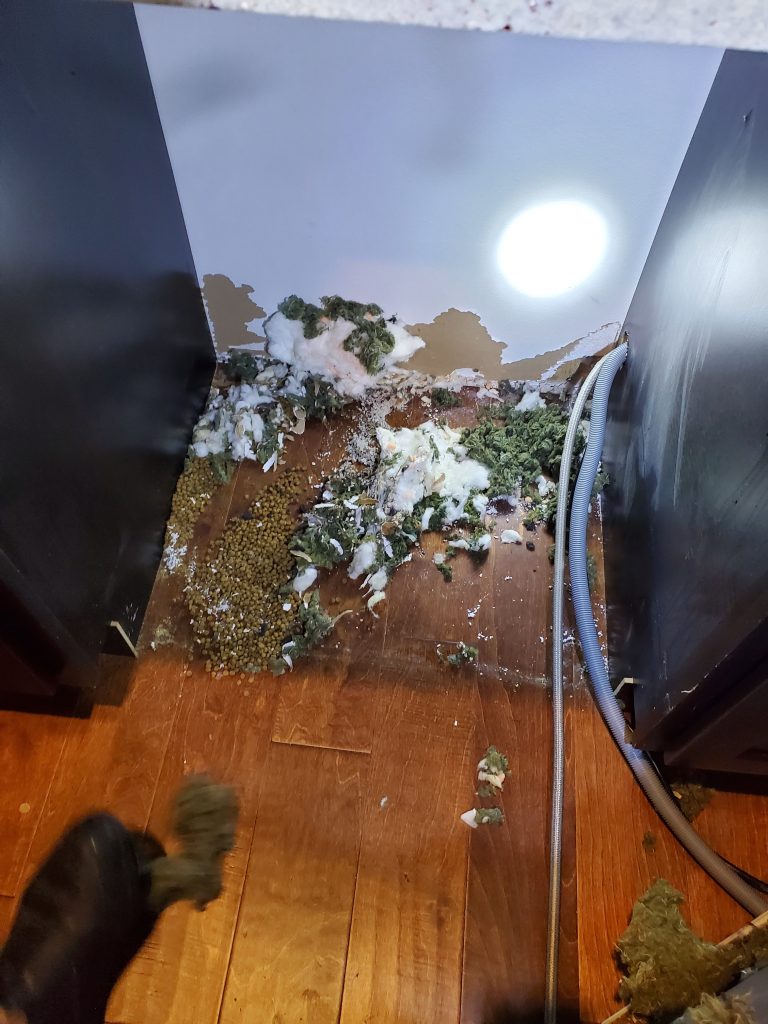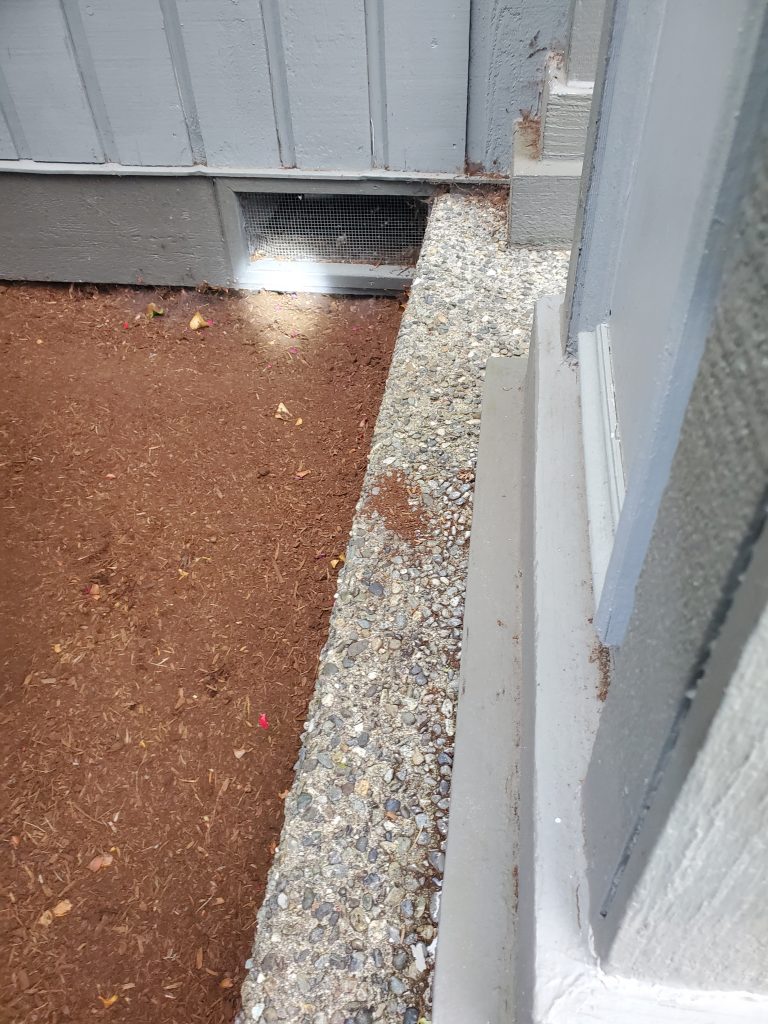STOP RODENTS BEFORE THEY ENTER: Get permanent rodent protection with professional exclusion services. Call (425) 495-0306 for a free inspection
Rodent exclusion isn’t just pest control it’s home protection. While traditional extermination deals with rodents already inside your home, exclusion prevents them from ever entering in the first place. This comprehensive guide reveals why rodent exclusion is the most effective, permanent solution for Pacific Northwest homeowners tired of recurring rat and mouse problems.

What is Rodent Exclusion? And Why It’s Different From Extermination
The Critical Difference
- Traditional Extermination: Kills rodents already inside your home
- Rodent Exclusion: Physically seals entry points to prevent rodents from entering
- The Reality: Killing rodents without exclusion means new ones will simply replace them
Why Exclusion is the Superior Solution
- Permanent Results: One time investment vs. recurring extermination costs
- No Chemicals: Safe for children, pets, and the environment
- Prevents Damage: Stops rodents before they can chew wires or contaminate spaces
- Comprehensive Protection: Secures your entire home, not just treats symptoms
“We spent $400 on extermination every year. After professional exclusion, we haven’t seen a rodent in three years. It paid for itself in two years.” Mark R., Seattle Homeowner
The 7 Most Common Rodent Entry Points in Northwest Homes
1. Roof & Attic Vulnerabilities
- Gaps at Roof Junctions: Where different roof lines meet
- Vent Openings: Unprotected attic and soffit vents
- Chimney Gaps: Spaces around chimney flashing
- Roof Edges: Gaps where roofing meets fascia boards
2. Foundation & Crawlspace Entry Points
- Crawlspace Vents: Unprotected foundation vents
- Utility Penetrations: Where pipes and wires enter the home
- Foundation Cracks: Shifting and settling creates openings
- Garage Door Gaps: Poor seals at the bottom and sides
3. Siding & Wall Vulnerabilities
- Siding Gaps: Where siding meets trim or foundations
- Utility Line Entry Points: Cable, phone, and electrical penetrations
- Window Gaps: Poorly sealed window frames
- Door Seals: Worn weather stripping and thresholds
4. Deck & Porch Access
- Deck Skirting Gaps: Openings under decks and porches
- Staircase Access: Gaps where stairs meet the house
- Storage Areas: Openings under outdoor storage spaces
Found entry points? Don’t wait for rodents to find them too Call (425) 495-0306 for professional exclusion.

Why DIY Exclusion Often Fails
The 5 Most Common DIY Mistakes
- Using Inadequate Materials: Steel wool alone won’t stop determined rodents
- Missing Hidden Entry Points: Professionals find gaps homeowners never see
- Improper Installation: Gaps around installed materials create new entry points
- Ventilation Blockage: Sealing vents without proper screening causes moisture issues
- Structural Damage: Incorrect sealing can trap moisture and cause rot
What Professionals Do Differently
- Thermal Imaging: Detect hidden entry points invisible to the naked eye
- Commercial-Grade Materials: Steel mesh, copper wool, professional sealants
- Structural Knowledge: Understanding building science and ventilation needs
- Comprehensive Approach: Addressing the entire home, not just obvious gaps
The Professional Rodent Exclusion Process
Phase 1: Forensic Inspection
- Interior Assessment: Attic, crawlspace, and basement examination
- Exterior Perimeter: 360-degree home inspection from foundation to roof
- Thermal Scanning: Identify hidden gaps through temperature variations
- Activity Analysis: Look for signs of current or previous rodent activity
Phase 2: Strategic Sealing
- Foundation Protection: Seal all ground-level entry points with chew-proof materials
- Roof Line Security: Protect attic and roof access with specialized exclusion work
- Utility Fortification: Seal around all pipes, wires, and penetrations
- Vent Screening: Install rodent-proof vent covers without restricting airflow
Phase 3: Verification & Monitoring
- Exclusion Warranty: Most professionals guarantee their work for 1-2 years
- Follow-up Inspections: Ensure all entry points remain sealed
- Monitoring Stations: Detect any new activity before it becomes a problem
Consult with the experience of rats exterminators
Rodent Exclusion Materials: What Actually Works
Professional Grade Exclusion Products
- Steel Mesh Hardware Cloth: ¼ inch galvanized steel for large openings
- Copper Wool: Chew proof and rust resistant for smaller gaps
- Expanding Foam with Rodent Guard: Professional formulas with bittering agents
- Metal Flashing: For edges and corners where chewing is likely
- Concrete Patch: For foundation cracks and masonry repairs
Materials to Avoid
- Regular Steel Wool: Rusts quickly and loses effectiveness
- Standard Caulk: Rodents chew through it easily
- Spray Foam Alone: Provides no barrier to determined chewers
- Wood or Plastic: Completely ineffective against rodent teeth
When is Rodent Exclusion Urgent?
High Risk Scenarios Requiring Immediate Action
- Neighbor Has Rodents: Rodents will seek new territory when neighbors treat
- Construction Nearby: Development disturbs rodent habitats, driving them indoors
- Seasonal Transitions: Fall and spring are peak rodent movement times
- Recent Extermination: Dead rodents leave vacant territory for new invaders
- Home Purchase: Protect your investment before problems begin
Signs You Need Exclusion NOW
- Droppings in Garage or Shed: Means they’re testing your defenses
- Scratching Noises in Walls: Indicates active entry points
- Nesting Materials Found: Means they’re already moving in
- Grease Marks Along Walls: Show regular travel routes
Don’t wait until you have an infestation! Call (425) 495-0306 for preventive exclusion today.

